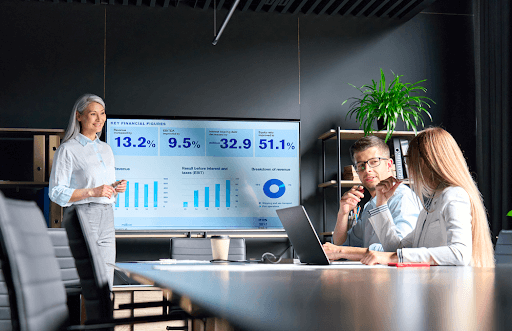To answer questions around topics ranging from human services to the stock market and beyond, data scientists often work with panel data. Like other forms of data, though, panel data has both pros and cons.
Panel data can be very helpful for finding correlations between variables and predicting future trends. It can also serve as the basis for other forms of data analysis. In contrast to time series data and cross-sectional data, for instance, panel data is collected by observing multiple entities at a regular frequency over multiple time periods. Entities can include individuals as well as demographic groups, companies, and countries.
Here’s a look at what panel data is and what it’s used for, as well as its pros and cons:
Table of Contents
Some Examples of Panel Data
The measurement of 2,000 homeowners weekly over two years, for instance, is an example of panel data. Another example is the measurement of 50 machines daily for 60 days.
In contrast, time-series data is about measuring a single entity across multiple time periods. To illustrate, a single machine is measured monthly for a year.
Cross-sectional data includes multiple entities, but only in one time period. For example, if 10,000 people have been measured, but just once, that is cross-sectional data.
Lots of Variables
Panel data can also encompass large numbers of variables. For instance, a complex statistical study might use panel data to help analyze the cities with the best school systems using several different variables, including high school graduation rates, grades, standardized testing scores, acceptance rates at colleges and universities, and post-graduate employment.
Panel data is used, too, in statistical studies on employment and housing. Expansive government studies with a data panel design include the British Household Panel Survey (BHPS), German Socio-Economic Panel, China Family Panel Studies, and, in New Zealand, the Survey of Family Income and Employment (SoFIE).
Private industry uses panel data in its own studies. For instance, financial fields collect and analyze data on stock prices, market volatility, and individual wealth. Also known as longitudinal data, panel data plays important roles in medical research, as well.
The Pros of Panel Data
1. More accurate predictions
The accuracy of predictions performed using panel data can be greatly improved with the use of machine language (ML). The machine learning model evaluation can be used to predict the answer on the evaluation data set. Then, the predicted answer can be compared with the actual answer, enhancing computer learning.
2. Less bias
By allowing for inclusion of large numbers of variables, panel data eliminates sample selectivity. In doing so, it reduces bias.
3. Shows process of change
By including repeated observations of the same entities over time, panel data clearly illustrates the process of change.
Cons of Panel Data
1. It’s expensive
Panel studies can be expensive, involving long-term investments in financial and human capital. The use of ML technology in conjunction with panel data tends to further increase the cost.
2. Panel attrition
In studies of individuals, in particular, the loss of “entities” from data can be substantial over time. These losses are referred to as panel attrition.
3. It can be difficult
Effective use of panel data demands highly specialized knowledge. Fortunately, however, excellent tools and resources are now available offering the ability to build panel data and platforms, test these systems, and collaborate on research and analysis.
The Bottom Line
When deciding whether or not to collect panel data, you need to weigh the specific research questions at hand in light of the overall pros and cons of panel data. If you’re running a complex statistical study, the use of panel data could be imperative, especially when there’s a requirement for highly accurate predictions. Under other research scenarios, you might find it easier and less costly to use time-series data or cross-sectional data instead.

